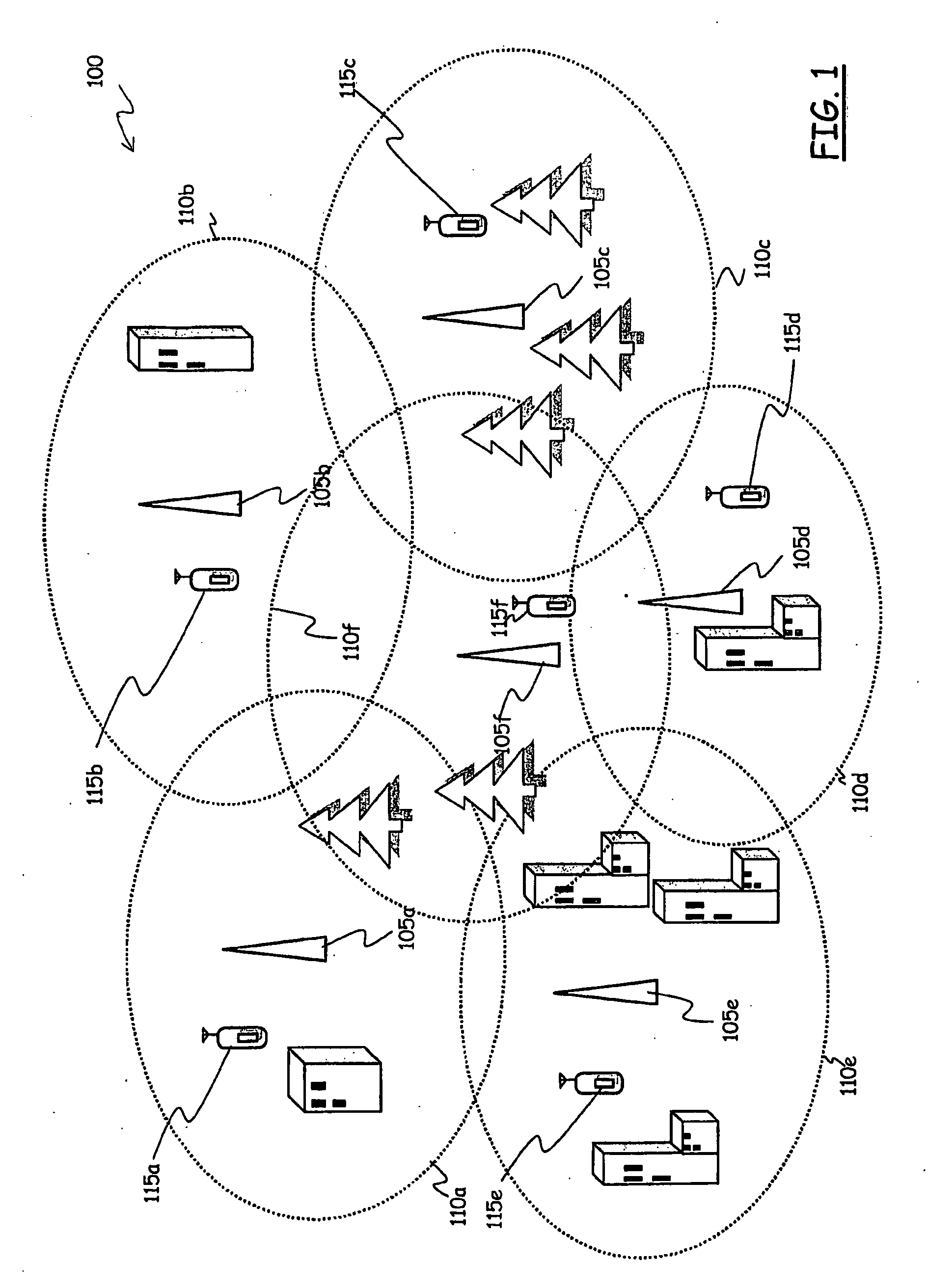Method for Estimating a Radio Coverage of a Geographic Area in a Cellular Mobile Radio Communication Network
- Summary
- Abstract
- Description
- Claims
- Application Information
AI Technical Summary
Benefits of technology
Problems solved by technology
Method used
Image
Examples
example 1
Two Radio Base Stations Belonging to the Same Hierarchical Layer
[0112]Let it be assumed that a generic pixel receives from a number Nbest=2 of layer 1 radio base stations electromagnetic field levels described by two Gaussian random variables A1, A2 with distributions N(μA1,σ2) and N(μA2,σ2). The probabilities that the generic pixel is assigned, i.e. served by the cell A1 or to the cell A2 are:
Prob(A1)=PH(A1)+Pbr(A1) and Prob(A2)=(A2)+Pbr(A2).
[0113]In particular, the above expressions for the probabilities Prob(A1) and Prob(A2) can be derived observing that, e.g., the probability Prob(A1) of the cell A1 of being the serving cell for the considered pixel is based on the following events (similar reasoning holds true for the other cell):[0114]the field perceived in the pixel and irradiated by the radio base station of the cell A1 is higher than the field perceived in the pixel and irradiated by the radio base station of the cell A2, or[0115]even if the field perceived in the pixel and...
example 2
Two Radio Base Stations Belonging to Different Hierarchical Layer
[0120]Let now the case be considered of a network having two different hierarchical access layers, with the first layer (layer 1) having priority over the second layer (layer 2).
[0121]Let A denote the Gaussian random variable describing the electromagnetic field level for the layer 1, expressed by the distribution N(μA,σ2), and let B denote the random variable describing the electromagnetic field level for the layer 2, expressed by the distribution N(μB,σ2); let Sg(A) and Sg(B) denote the respective hierarchical access thresholds. Two cases can be identified:
[0122]a—Sg(A)≧Sg(B)
[0123]b—Sg(A)g(B)
Case a: this is the case that is most typical in the practice; the probabilities Prob(A) and Prob(B) can be determined by considering the integration regions depicted in FIG. 6A (for the case Sg(A)>Sg(B)) and FIG. 6B (for the case Sg(A)>Sg(B)).
[0124]Since the layer 1 is the priority hierarchical access, each time the electromagne...
case b
s situation, not very frequent in the practice, the probabilities can be calculated considering the integration regions depicted in FIG. 6C:
Prob(A)=Prob(A>Sg(A))+Prob(A>B,S0<A<Sg(A),B<Sg(B))=∫Sg(A)-∞fA(a,μA)a∫S0Sg(A)a∫-∞?fA(a,μA)fB(b,μB)b==12erfc(Sg(A)-μAσ2)+∫S0Sg(A)fA(a,μA)12erfc(μB-aσ2)aProb(B)=Prob(B>Sg(B),A<Sg(A))+Prob(B>A,S0<B<Sg(B),A<Sg(A))==∫Sg(B)-∞b∫-∞Sg(A)fA(a,μA)fB(b,μB)a+∫S0Sg(A)b∫-∞?fA(a,μA)fB(b,μB)a+∫Sg(A)?g(B)b∫-∞Sg(A)fA(a,μA)fB(b,μB)a==∫Sg(B)-∞·fB(b,μB)12erfc(μA-Sg(A)σ2)b+∫S0Sg(A)fB(b,μB)12erfc(μA-bσ2)b+∫Sg(A)Sg(B)fB(b,μB)12erfc(μA-Sg(A)σ2)b?indicates text missing or illegible when filed
PUM
 Login to View More
Login to View More Abstract
Description
Claims
Application Information
 Login to View More
Login to View More - R&D
- Intellectual Property
- Life Sciences
- Materials
- Tech Scout
- Unparalleled Data Quality
- Higher Quality Content
- 60% Fewer Hallucinations
Browse by: Latest US Patents, China's latest patents, Technical Efficacy Thesaurus, Application Domain, Technology Topic, Popular Technical Reports.
© 2025 PatSnap. All rights reserved.Legal|Privacy policy|Modern Slavery Act Transparency Statement|Sitemap|About US| Contact US: help@patsnap.com



